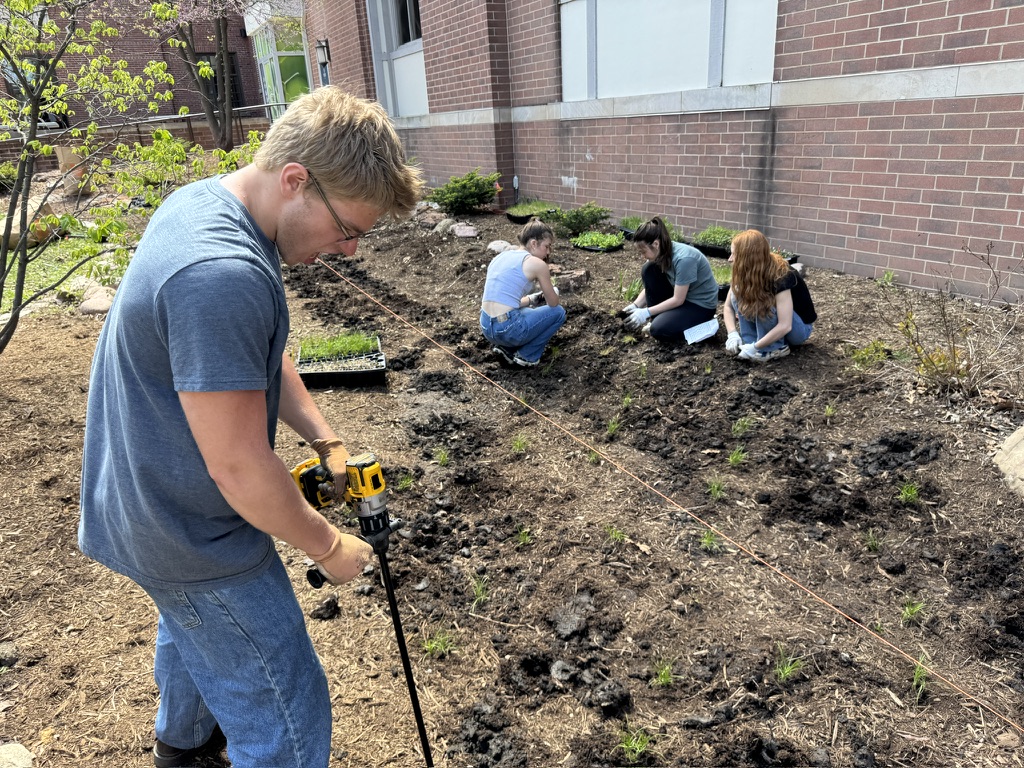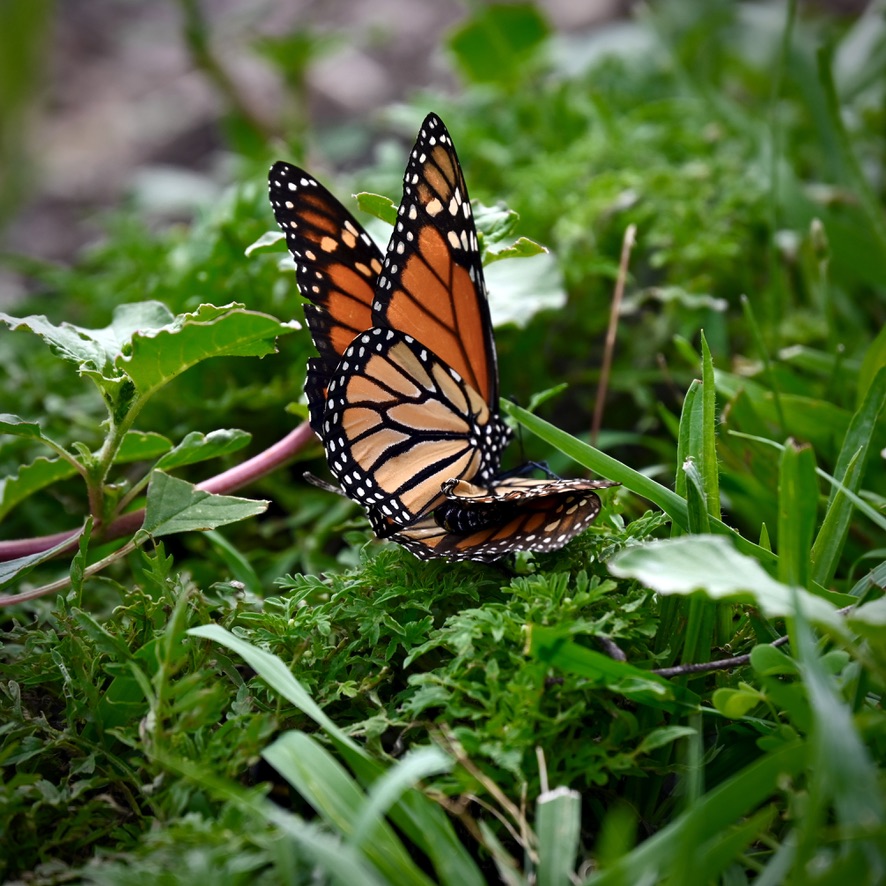Much of the built environment, the buildings, the sidewalks, the streets, is impervious to water. This style of building is not without flaws, one being an increased risk of flooding. Luckily, there’s a growing movement in the Champaign-Urbana area to combat these floods and make the places we live in more resilient to flooding. This movement’s solution is rain gardens.
Earlier this month, we sat down with Joe Hinsberger, an Environmental Engineering student at the University of Illinois, to discuss the development of rain gardens and a project he is helping to lead: an expanded rain garden at McKinley Hall.
Discovering Rain Gardens
Joe first put rain gardens on his radar while participating in the Solar Decathlon during his freshman year. He found that another rain garden in the Champaign-Urbana area, Red Oak Rain Garden, had a wide variety of helpful resources for his subject of study, researching ways to make cities eco-friendly.
Joe’s research continued in the form of a project-based civil engineering course. He spent the semester researching the feasibility of rain gardens in various sites across Champaign-Urbana and eventually connected with McKinley Hall.
The Problem at McKinley Hall
McKinley Hall already had an established rain garden, but it was small and eroding. It wasn’t very effective at mitigating flooding.
McKinley has a unique engineering issue where many of its water inlets are built higher than the areas where water pools during a rainstorm. The misplacement of these inlets leads to increased flooding, and icier sidewalks during the winter months.
Building a Better Rain Garden
During planning and construction, Joe and his team prioritized planting native species. They primarily used sedges, a grassy water-loving plant, as ground cover.
When asked about the “MVP” (most valuable plant) of the garden, Joe gave a poignant answer:
“The strength of the rain garden lies in its biodiversity, so there’s not just one plant that’s the MVP.”
The plants were chosen because of their non-overlapping niches and synergy with each other.
Looking Ahead
Joe is continuing his work in the rain garden this fall and encouraged anyone interested in making a difference in their community to get outside and get involved.
He stressed the importance of working at the local level, so those enacting change can easily see the impact of their work and understand why it matters.
Joe also emphasized the value of learning from others:
“When you start something you’re super dumb, so when you talk to an expert, you’re instantly so much smarter.”
To contact Joe with any questions about his project, he’s available at his UIUC email: jmh12@illinois.edu
To read more about the Red Oak Rain Garden, visit redoakraingarden.org/resources
 David
David 
